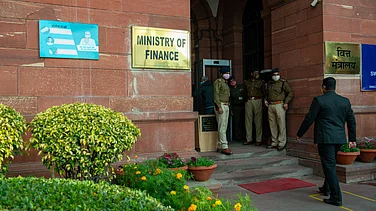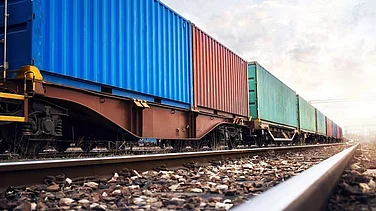India can exceed expectations and not just meet them, through the Production Linked Incentive (PLI) schemes only if it manages to build a stable supply chain for large scale production, said Harsha Vardhana Singh, Chairman of IKDHVAJ Advisers LLP and former Deputy Director General of the World Trade Organization.
In an exclusive interview with Outlook Business, Singh said, “The policy environment for large scale production is very different because operating on a continuous basis in a supply chain of a large scale production requires stability and predictability. That is something which is still not there in the policy environment.”
Singh, who was addressing the importance of sustainable standards in trade at the third International Convention on Sustainable Trade and Standards, also spoke about issues related to India's trade and commerce.
Following are edited excerpts from the interview:
Would you like to tell us about how these Sustainability Standards and this Convention are important in today’s context, and for India specifically?
Sustainability standards were important because sustainability was initially identified with environmental issues. And later the concept was expanded. So, you have the global sustainable development goals, including 17 different goals. These are issues which are considered important for all nations and to achieve these goals, and to do it in a manner that it becomes a coherent effort, you require the same thing internationally, that you require nationally.
When you are talking to each other, you express your concerns maybe, but also share ideas and capabilities. And you can then develop links which can be commercial links, and as well as helping each other with filling the gaps. For this, an international effort was required. Recognising this, the 6 UN organisations have come together under UNFSS. In that context, we discussed all the issues and it was recognised by India that we must have a national platform. So India was the first country to actually have a national platform on sustainable standards.
Given the fact that there were multiple countries with common interest, the next step was to have a common platform for discussions, tools which are internationally available and methods by which solutions have been reached etc, so this convention came up in the background.
Don’t you think that trying to achieve these standards can potentially push back the growth rate of developing economies?
Even among developing economies, you have a whole range of capabilities, income, institutions, mechanisms, and infrastructural levels. So yes, greater the gaps, more difficult it becomes. But, what one has to see is how to fill those gaps, if required. If you want to sell something in another market then you must meet those standards. And there are methods, in which it is done, for example the Rana Plaza disaster in Bangladesh. The industrial groups in Europe and the United States actually worked with the Bangladeshi producers to build their standards and capabilities. They invested in training them and then bought products produced there which were meeting these standards.
There are different kinds of partnerships which are possible, but yes, the governments give a lot of emphasis to this as does the private sector. And often, because objectives are common, the governments in different countries have their own standards. We were examining this kind of requirement in other industries like the textile industry, and often the foreign buyer would ask are you meeting your domestic standards. So it is not as if it is necessarily imposed by outside. Of course depending on products and buyers, you can have differences, but individual countries themselves want those standards to be met. And that becomes the ladder to go on to other levels of competence.
Services growth has taken a larger chunk in India’s trade expansion compared to other countries and the PLI schemes are aiming to turn this around. But its success has been limited to electronics till now. Do you think that India can repeat the same in other sectors as well?
As far as the PLI scheme is concerned, certain schemes are doing much better than other schemes. One such scheme is for large electronics which is basically focused on mobile phones. If you see the developments in the last 2-3 years in mobile phones, it is a remarkable development. In fact, last year the exports of mobile phones was 11.2 billion, before that it was 5.8 billion, and 3.5 billion before that. They have increased because of investment and a sustained increase in production. Today, India’s production of mobile phones is larger than the domestic demand for mobile phones. So, once the production exceeds domestic demand, the rest will be all exports. And if exports are not possible, those production increases will not take place.
Today, we are in a situation where we must actually be able to compete in the global market, and at least we are able to do that right now. Policies need to keep on sustaining themselves, so that we can even become larger players there.
At merchandise level, you have to continue with policies which reduce obstacles that policies themselves create. There are two kinds of obstacle; one is those created by the operational conditions and one created by policies. Government has focused a lot on both. And now with Gati Shakti etc, there are going to be further improvements in the operational context. We will continue to make progress. The potential is large and if things continue the way they are, we will do exactly what you said. The issue is how will we take forward all these policies and ultimately we have to focus on scale of production. The policy environment for large scale production is very different because operating on a continuous basis in a supply chain of a large scale production requires stability and predictability. That is something which is still not there in the policy environment. Once we can have that, I think we will exceed the expectations and not just meet them.
India this year restricted export of certain commodities like wheat for internal reasons. When India takes such measures, does it not allow our competitors to make progress in the global market?
Normally such policies are implemented only when it is required to meet the demands of the domestic population. That is a very special condition. And usually when India faces those conditions, the world might be facing the same conditions. That is why the world came together to say that in those difficult conditions exporting countries should not stop exports through the World Food Programme. So in that situation, your concern will not be reflected.
If it is a very India specific issue and the government needs to do it, then they need to do it. However, if something happens for 3 years or 5 years etc, then the competitor can make progress. If that is not the case, then you know how to tap the world market, it takes more effort to comeback, yes, but you need to do that as a matter of national exigency. But, other alternatives also need to be looked for a policy, which can meet the same need because you are right, the disruption is rather large. So, some more thought on that might be needed.
RBI Governor Shaktikanta Das said India has been resilient to external shocks. According to you, how much is India resilient in the current global scenario?
India was not resilient in COVID time. It had the largest fall among large economies in GDP. But the point is, India recovered also strongly. If you define resilience as not having the impact at all, that did not happen. During the COVID period, the government came together in a major way to make sure any gap or any exigency is addressed quickly. The resurgence also took place quiet quickly, but the fall in India’s GDP in one particular year of COVID was very large. The lesson here was the government’s response was very crucial. And yes, there is stability in the system. The momentum itself of being a large economy gives more resilience when compared to several other countries. But at the same time, the crucial part is the policy responses which take place. Indian government has been alert on that. Still, that does not mean that the impact will not come. If you can anticipate it and take steps, then the impact will be less.
Where do you see India’s role in Global Trade by 2030?
A UK study has estimated that India will be the fourth largest exporter in the world. If it is moving towards that then it will be a large player in multiple sectors. You can’t be the fourth largest exporter in the world without diversified growth.
And what sectors will they potentially be?
It is very difficult to anticipate. One can have some priority sectors, but if you create a good environment, if you are friendly to investments and learn from those who have actually succeeded in achieving those objectives, then the impact can be very wide. Of course you can choose your priority sectors like they have chosen in PLI. But look at how the PLI’s are working. If you make corrections, you may even need to drop some other. We have to learn from where it is working. It is a constant learning and facilitating environment which is to be created. I am very impressed by what they are doing in Gati Shakti, because in governance terms it is a coherent exercise. And it is forward looking because of the tools it is using. Such model needs to be applied in several areas.



























